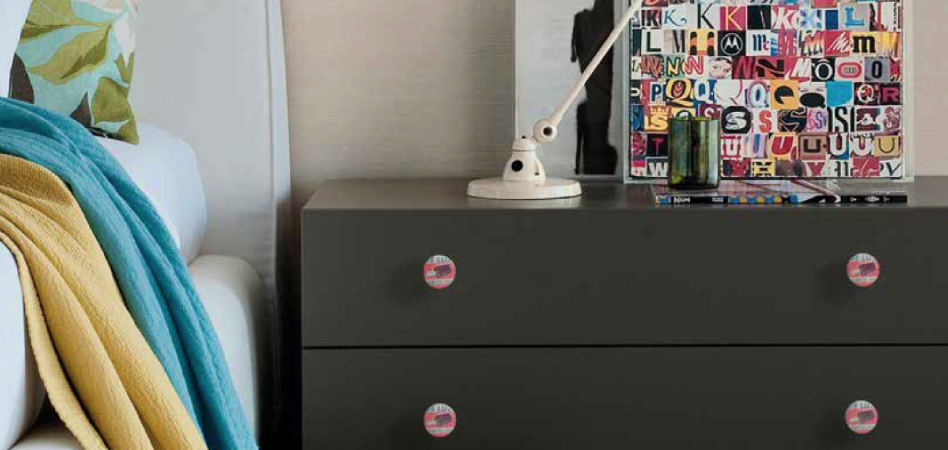What is the average life span of a range of decorative fittings?

There are three phases in the relationship of a decorative fitting range with customers:
– First: Love at first sight: a new range of decorative fittings is surprising and engaging. There is no transition period, the customer can’t tear themselves away from the product.
– Second: Love by surprise: -“”You’re just what I’ve been looking for, I’ve finally found you!”” This is the same even after the range has been in the store for a little longer.
This meeting takes place with a little more moderation than the first phase but with the same intensity and, moreover, has the added bonus of discovery. The buyer feels special for having found something different, something that is not exactly at first sight and that coincides fully with what they were looking for.
– Thirdly, when the range of fittings has been around long enough to be considered a “”house speciality”” (which in a positive sense only happens on those occasions where fittings have acquired a timeless nuance associated with quality, elegance and good taste that’s always in high demand), this is when the fittings are no longer bound by certain store periods, but simply form part of the store itself.
What are we talking about? A love story? Passion? Habit? Marketing?
Well, a little bit of everything, without forgetting that in the day-to-day life of a DIY shop, the average life span of a range of decorative fittings is inevitably linked to the commercial space available.
That is why the second case can happen, the buyer feels that they can look past the brand new product displays because the shop has space, it has shelves to exhibit fittings for buyers who are looking for a specific type of product that fits their aesthetic criteria, with their specific needs at that moment, perhaps because they saw it when they went to the shop on another occasion or because they have been told about it by other customers.
In this case, we are talking more about aesthetics than quality because one range of fittings differs from another, mainly in design and functionality, without affecting in any way the concept of quality that is already integrated into the search criteria of customers when referring to consolidated brands such as REI.
To put it bluntly: in large retail outlets, the average life span of a decorative fitting range is about two years, while in small retail outlets, where distribution is less, there is simply no planning for display and sales of ranges.
Small businesses don’t plan, they buy a little bit of everything that the distributors offer with the widest possible criteria that allows them to cover the largest number of “”love stories”” that can occur between their customers and their decorative fittings.
Quality, aesthetic criteria and marketing – emphasising that the order of the factors remains unchanged and that the order will be given according to the specific moment in the life cycle of the decorative fitting – are the three factors that decide the average duration of a range of decorative fittings in the store, in addition to the two-year period that experience has set as a reference and that, without a doubt, constitutes a guide when making decisions in the purchasing department.
What determines the life span of a range of decorative fittings on a shelf? Is it possible to be one hundred percent right when buying a product?
The two previous questions complement and combine like lightning and thunder during a stormy summer evening.
And the whole show happens in the sky of the purchasing team which, with the collaboration of the marketing department selects the material that will be offered to buyers every two years?
The purchasing team that only acts every two years can be thinking about withdrawal if the competition has not already withdrawn it.
The fact that the estimated lifetime of a range of decorative fittings in the store is two years does not necessarily mean that this is the time limit for the purchasing department to purchase the product. New products must have their own time rhythm on the shelves, a rhythm designed from market variables and specific considerations related to the specific experience of each store.
There’s no love story strong enough to hold if the news comes every two years.
Having made this clarification, let’s start from the second question to get to the first one: Is it possible to be one hundred percent right when buying a product? And the answer, as you may have guessed, is simply no.
So, if it is not possible to be one hundred percent correct when choosing a product for sale, how can you choose a range of decorative fittings to have the longest possible life on the shelves?
The answer is automatic: following criteria of quality, marketing and trends, because getting something one hundred percent right is practically impossible, but getting close is not.
REI already uses quality and functionality in its favour, we would say that the relationship with their customers is consolidated and loyal, but their strategy goes beyond that.
This is probably the explanation why REI is a benchmark in the sale of decorative fittings, its strategy for attracting loyalty and careful monitoring is simply unbeatable.
There’s nothing like nurturing a loving relationship to make it last.

